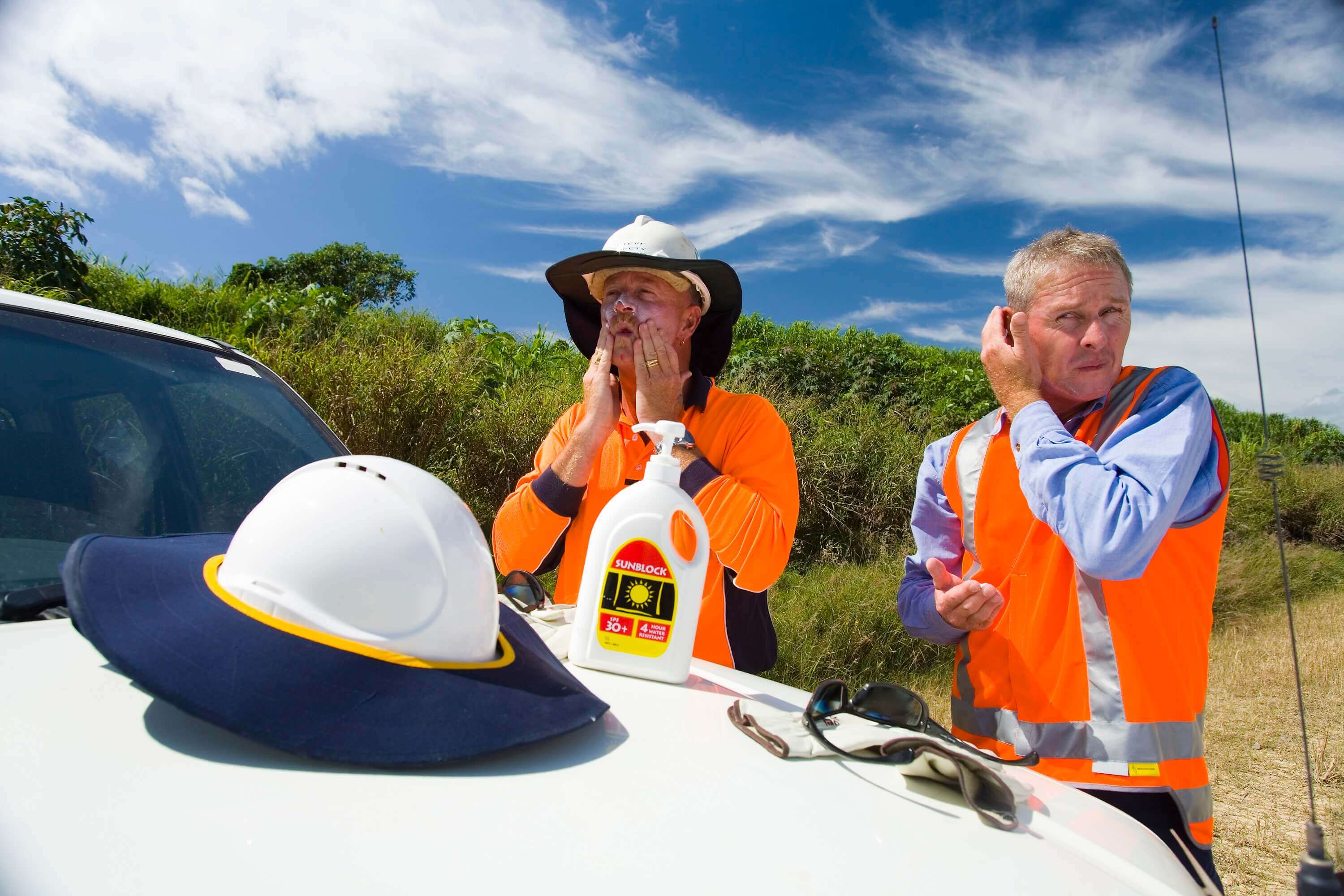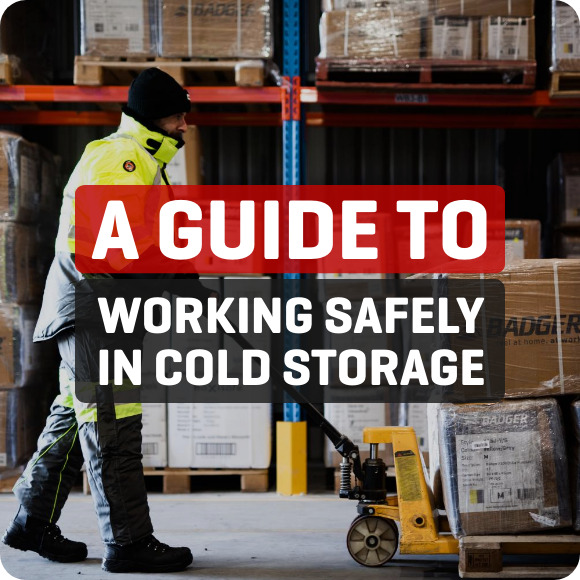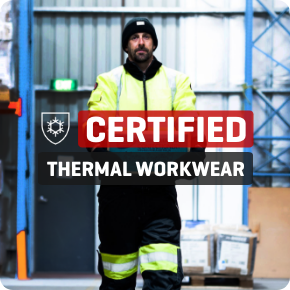
The Australian summer can add risk and hazard to your job, whether its inside or outside. Heat-related illness is preventable, but can be very serious, and sometimes, fatal.
There are some simple steps you can take each day to stay safe as you work in hot temperatures. We discuss 5 of them in this article, which you can implement today!
What are the illnesses and risks from working in the heat?

Heat related illnesses occur as your core body temperature increases as your body absorbs heat faster than it can cool. Some of the most common heat injuries or illnesses include:
Heat stroke
Heat stroke is one of the most serious heat illnesses and can be life threatening. It occurs when your body no longer sweats or perspires, allowing your core temperature to reach dangerously high levels. Symptoms for heat stroke include the victim becoming confused, fainting, having slurred speech, dizziness and clammy skin.
Heat stress or heat exhaustion
As your body loses water and salt, it can become exhausted by the physical exertion. Obviously, heat stress can lead to heat stroke if action is not taken, and symptoms can include pale, clammy skin, rapid breathing and shortness of breath.
Heat cramps or heat rash
Obviously, these are some of the less serious injuries working in summer can lead to, but both of them occur as you sweat for long periods of time. An irritated or unfocused worker is always more of a hazard to themselves and their colleagues, so it’s important to minimise these illnesses as well.
UV Radiation
If you’re working in the heat outdoors, the risk of UV radiation from the sun is significant during the summer months. Outdoors workers receive up to 10 times the amount of UV radiation than indoors workers, and with over 34,000 skin cancer diagnosis’ a year, its vital protective measures are taken to stay out of the sun. https://www.sunsmart.com.au/skin-cancer/skin-cancer-facts-stats
How to stay safe as you work inside or outside in Australia’s summer
What you wear makes a big difference!

Like staying safe in freezing conditions, choosing the correct clothes and PPE is one of the most important factors in staying safe as you work in hot conditions.
- We’ve already covered off on some of the serious risks of UV radiation, so if you are working in the sun be sure to take no shortcuts! Try wear long sleeves and long trousers and opt for versions with ventilation to help to stay cool. Wear a wide brim hat and/or keep your shirt collars up if you can.
- When choosing your workwear top, it’s always best to go for something that is lightly coloured, such as a hi vis polo. Keep it loosely fitted, as this will help keep your body cool.
- As we saw in the news recently, hi visibility tape (D+N tape) adds a small risk, should the tape overheat from extreme UV radiation. You should work with your company’s OHS representative to ensure this risk is mitigated.
- Choose socks with natural fibres, such as wool or bamboo, as cotton makes your feet sweat and overheat.
- Choose shoes that are breathable, such as micromesh or genuine leather. Cheap, synthetic leather shoes do not allow your feet to breathe and will leave them sweaty and uncomfortable.
- In Australia opt for at least 30+ SPF sunscreen.

What you eat also makes a difference!
Your diet is also instrumental in staying safe as you work in hot temperatures.
Firstly, ensure you keep drinking regularly throughout the day; don’t wait until you’re thirsty! It’s recommended you drink at least 100mm of water every 20 minutes or so. Also, its wise to avoid caffeine (and alcohol) where you can, as it dehydrates your body faster.
Regulate the indoor temperature at your workplace
It’s important to realise you can be exposed to the dangers of working in the heat indoors or outdoors. The optimum temperature for stationary work is between 20°C and 26°C, but employees physically exerting themselves as they work prefer a lower temperature.
It’s vital to maintain air movement throughout the workplace through natural or mechanical ventilation to keep your staff safe and comfortable. It’s important to remember that if temperatures are above 27°C you’ll need some form of air conditioning or cooling as well.
Take frequent breaks from your work
To regulate your body’s core temperature and keep it under control, its vital you take regular breaks from physical work. In these breaks, head into the shade and rehydrate. Have a good douse of water and some healthy energy foods, such as fruit and nuts.
 Take UV protection seriously!
Take UV protection seriously!
We’ve already discussed what clothing & PPE to wear to combat UV rays when you’re working in the sun. there are other measures you and your employer should take to minimise the risk of UV radiation injury. If you’re working in a contained area, you could erect temporary shade structures over the area. If possible, you could plan your work routines, so you minimise the time you spend in the mid-day sun by completing any outside work in the mornings or late afternoon.
For more information and ideas on combating UV damage, check out SunSmart’s website.


